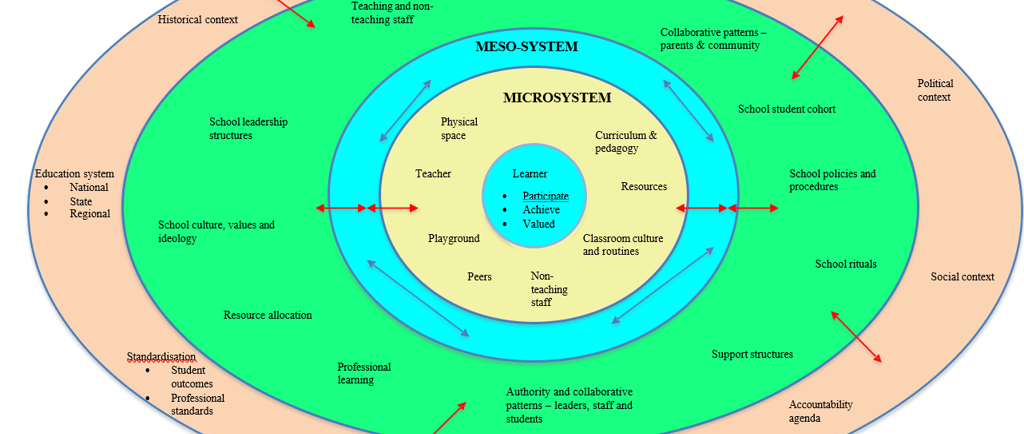Explaining the Ecology Inclusive Education
Yirgalem Habte, PhD.
6/30/20251 min read


Microsystem (Center Circle):
The learner is at the center, surrounded by immediate environments such as teachers, peers, playgrounds, classroom routines, and resources. In inclusive education, this level emphasizes direct participation, achievement, and feeling valued, regardless of ability or background. Teachers and peers play a crucial role in fostering an inclusive atmosphere where every student can take part and succeed.
Mesosystem:
This layer represents the interactions between different microsystems—how relationships between teachers, parents, peers, and non-teaching staff influence the learner. In an inclusive setting, collaboration and communication among these groups are essential to support individualized needs, adapt curricula, and ensure consistent support across contexts.
Exosystem:
This includes broader school structures and policies that indirectly affect the learner, such as school leadership, professional development for staff, resource allocation, and patterns of collaboration with parents and the community. Inclusive education relies on supportive policies, adequate resources, and ongoing staff training to remove barriers and provide equal opportunities for all students.
Macrosystem:
The outermost layer encompasses cultural values, social and political contexts, and national or regional education systems. Inclusive education is shaped by societal attitudes toward diversity, national curriculum standards, and legal frameworks that mandate equal access and non-discrimination in education.
Chronosystem (Noted at the Bottom):
This refers to the dimension of time—how changes over time (such as policy reforms, evolving societal values, or a student’s own development) impact inclusive education practices.
Key Points for Inclusive Education:
Inclusive education requires coordinated efforts at every level—from classroom practices to national policy. The diagram shows that a truly inclusive environment is not just about what happens in the classroom, but is influenced by leadership, resources, community involvement, societal values, and historical context. For inclusion to succeed, all these systems must work together to ensure every learner can participate, achieve, and feel valued, regardless of their abilities, backgrounds, or needs.
